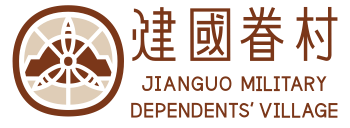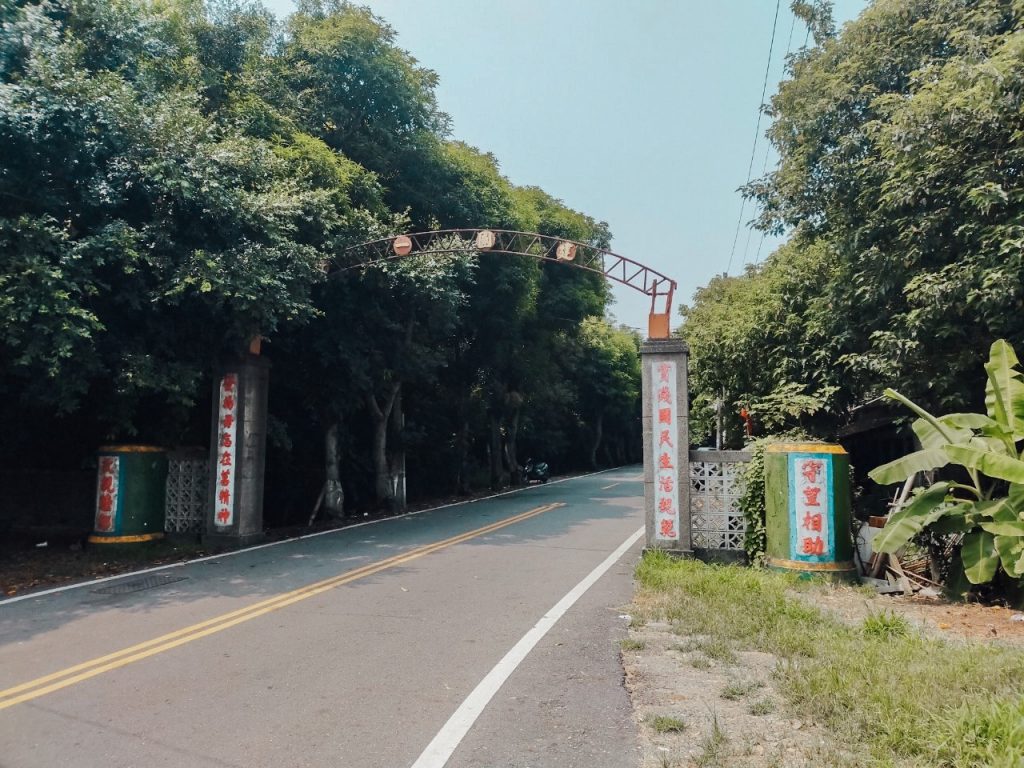
ㄧ村門牌
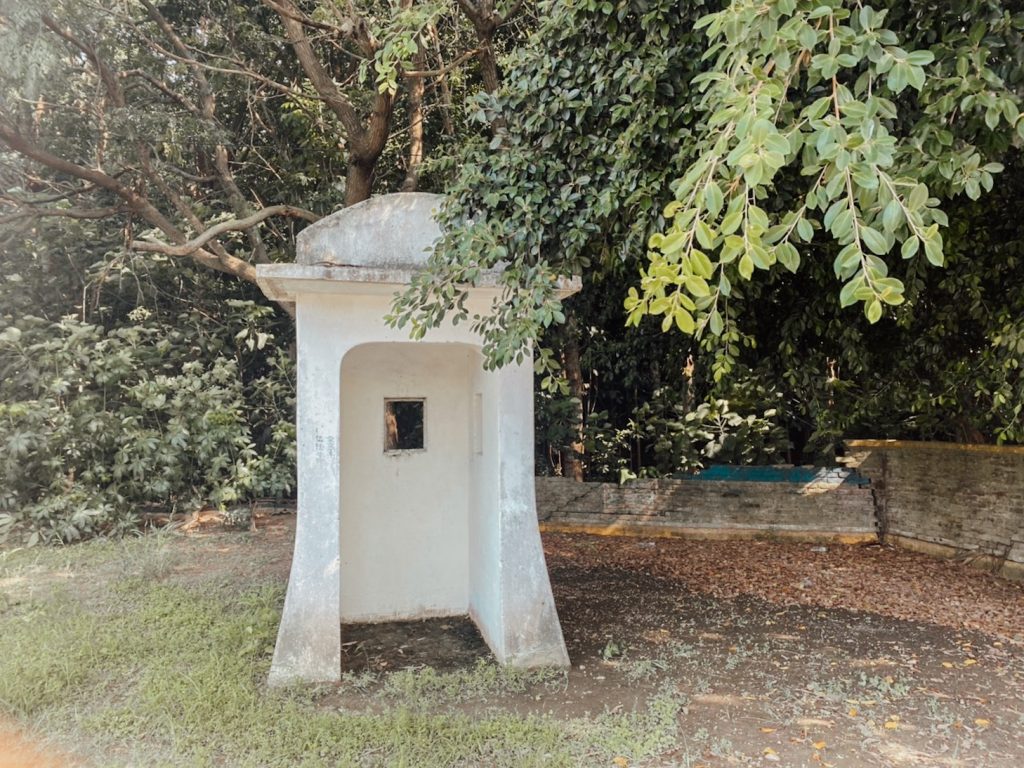
軍帽式崗哨 Helmet-shaped Lookout
日軍檔案中名為「番兵塔」,四個村皆設有一至兩座,為兵舍守衛的出入口。鄰近建國一村入口處的崗哨旁房舍為建國一村一號,屬於過去與崗哨搭配的日軍衛兵所。戰後初期,崗哨仍延續使用,為國軍站哨守衛的軍事區域,而衛兵所於戰後成為一般眷舍,因某任里長曾居住於此,又被稱呼為里長宅,現為「建國眷村再造協會」會址。
Each of the four villages was provided with one or two such lookouts; they were used as an access entrance of the barrack guards. The house near the lookout of Jian Guo Village-I’s Entrance was number 1 of Village-I; in the past it was the Japanese guard house collocating with the lookout. In the early years after the War, the lookout was still in use, a military post for the national military, but the guard house became a general residence for military dependents after the War; it was called Village Chief’s Resident since one of Village Chiefs had lived in it. It is today used as “Jian Guo Village Renewal Association.”
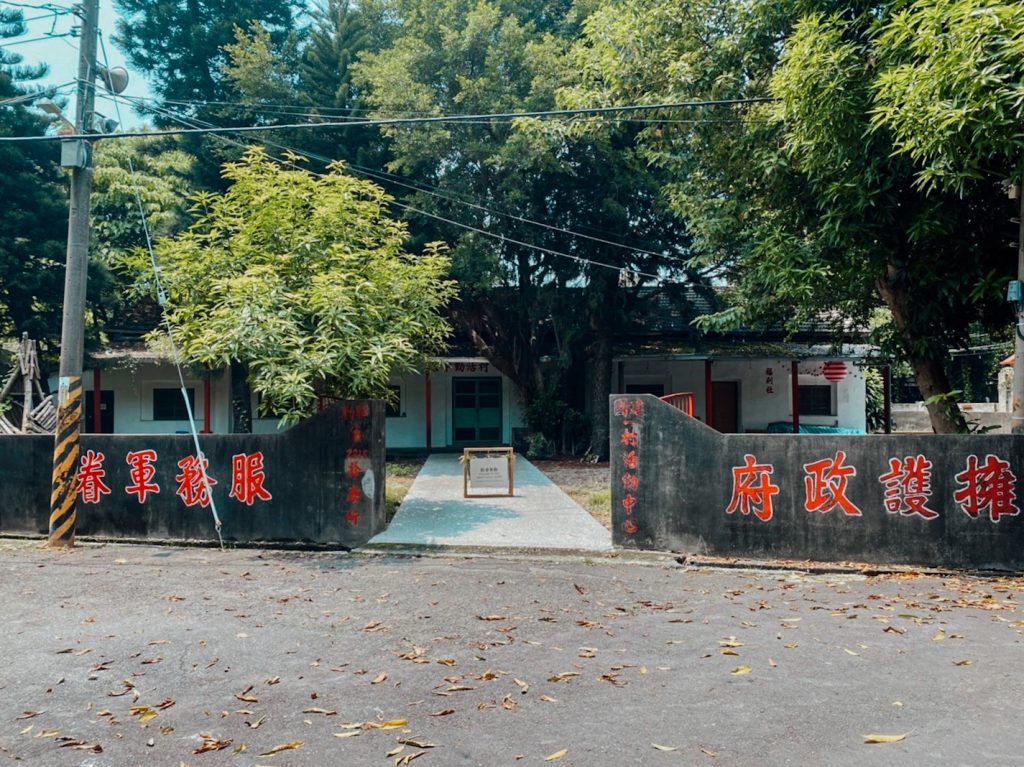
活動中心 Activity Center
日治時期屬日軍的「士官烹炊所及浴室」,戰後接收兵舍的老兵皆有印象內部有一浴池,接收後的浴室改建成為虎尾機場的軍事「電台辦公室」,電台結束任務後,便成為活動中心、診療所及福利社,許多眷村孩童皆曾來到活動中心的福利社購買花生米或酒。
During the Japanese occupation, this was the kitchen and bathroom of petty officers; after the War, elder soldiers who took over the barracks all remembered there was a bathtub inside. After the takeover, the bathroom was altered into the military radio office of Hu Wei Airport; on completion of the mission of the radio station, it became the activity center, clinic and convenience store, where children of the villagers used to drop by to buy peanuts and drinks.
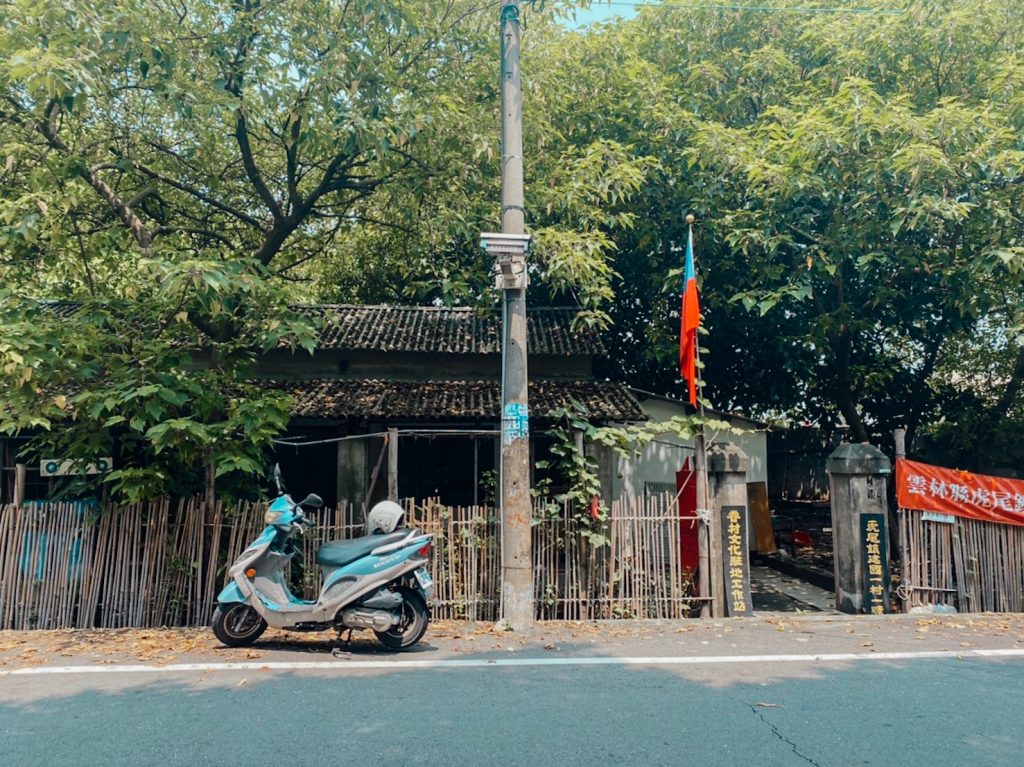
里長宅
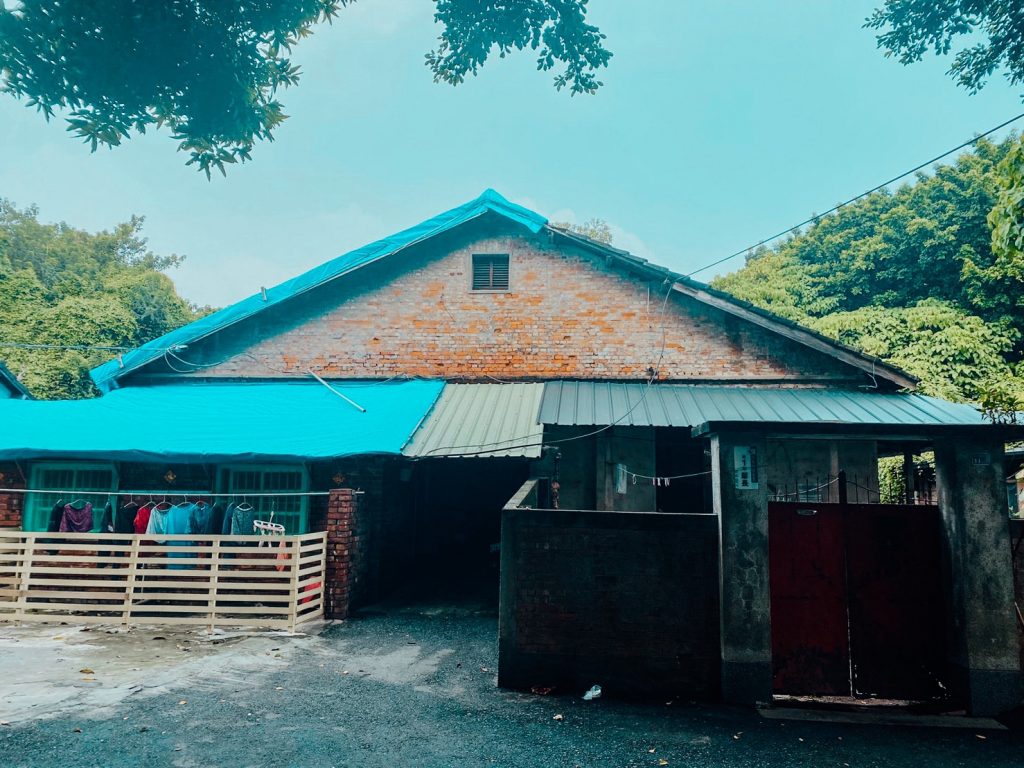
甲棟
位於一村入口處的右方,此建築群包含了三個建築物;最靠近入口的稱為「甲棟之一」,從入口處算過來的第二棟稱為「甲棟之二」最後一棟則稱為「甲棟之三」,在戰後皆稱為甲棟。此三棟建築原本是1943年日本海軍航空隊虎尾基地眷區作為醫務所之設施;戰後則改為軍眷宿舍來使用。甲棟之一、二中間設有中廊可互相連通,甲棟之三為醫務所的主體建築,中間走道旁可看見醫院專有的掛號領藥窗口。
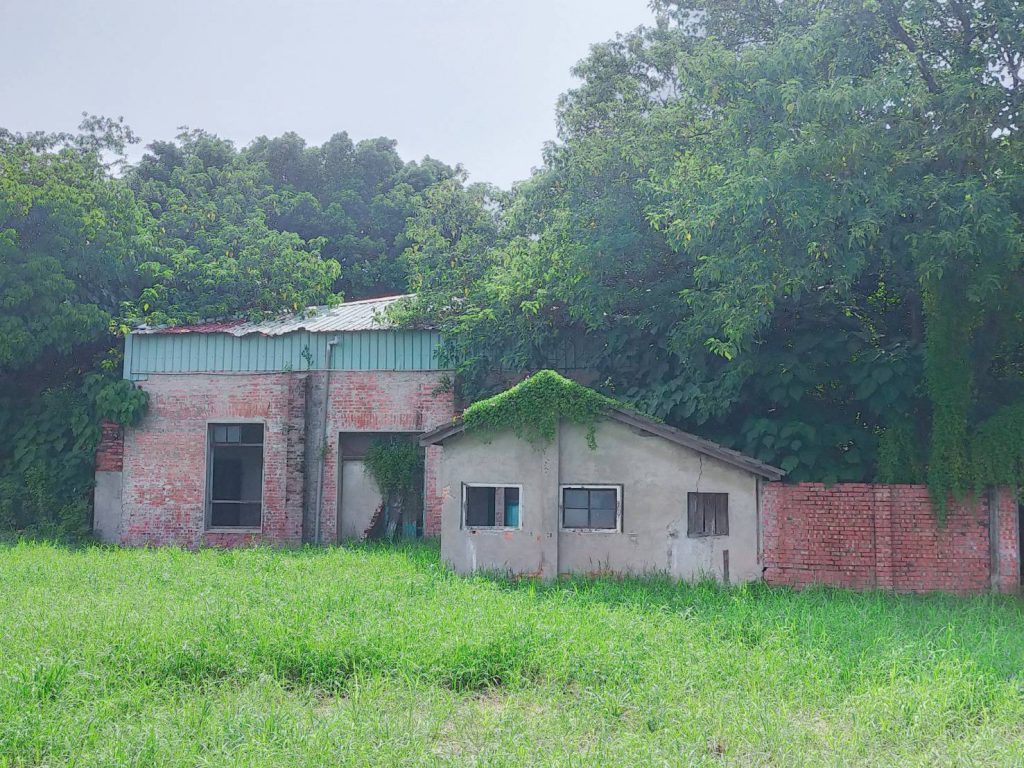
乙棟
在日治時期屬於庫房建築;戰後作為空軍眷舍,約在1961年曾失火過一次。
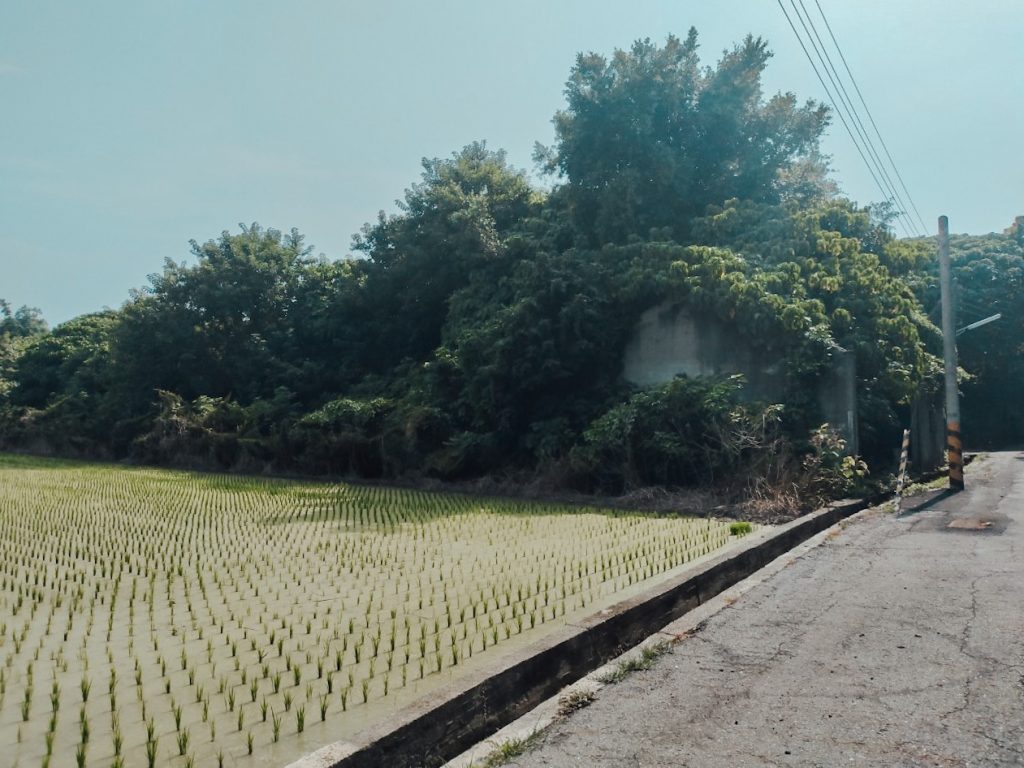
丙棟
此棟同為日治時期的庫房建築;戰後由國軍政府接收,剛開始也作庫房使用,後改為空軍眷舍。2006年12月失火,屋頂及隔間全部燒毀。
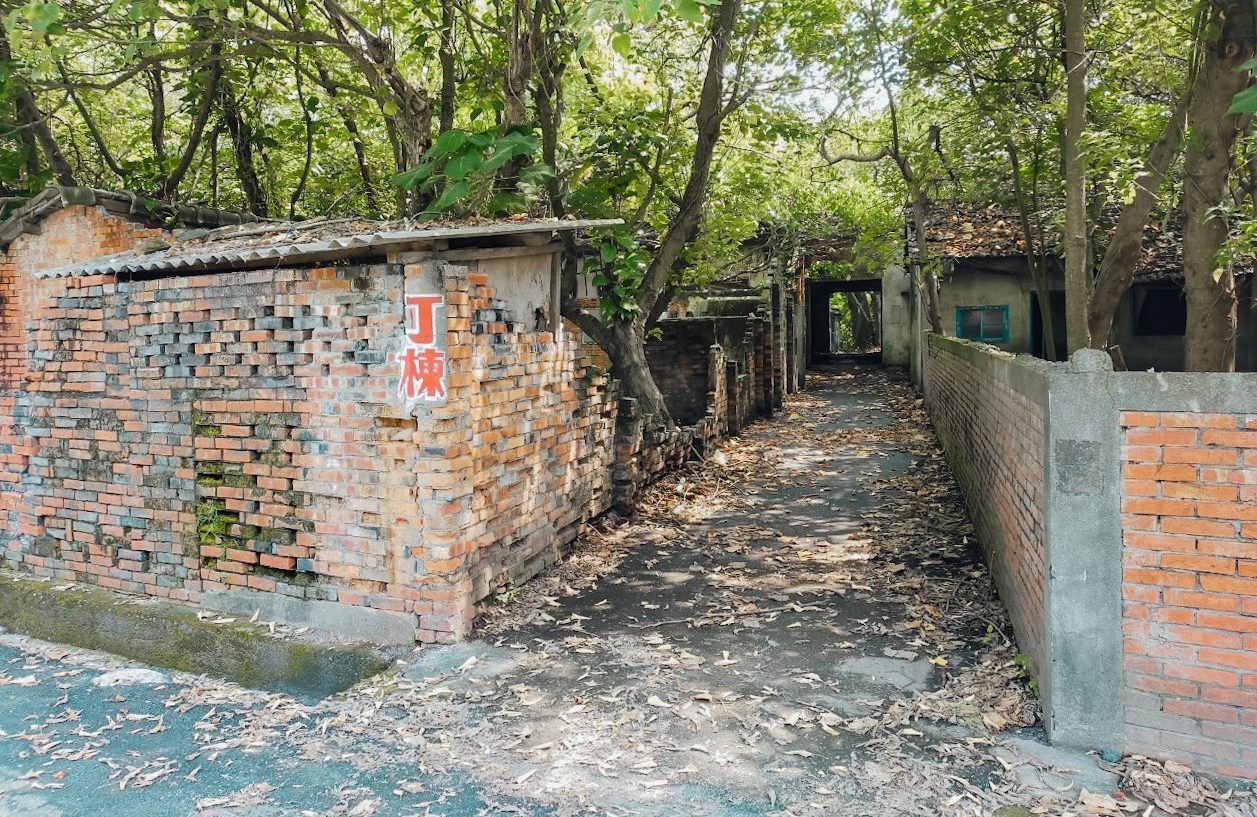
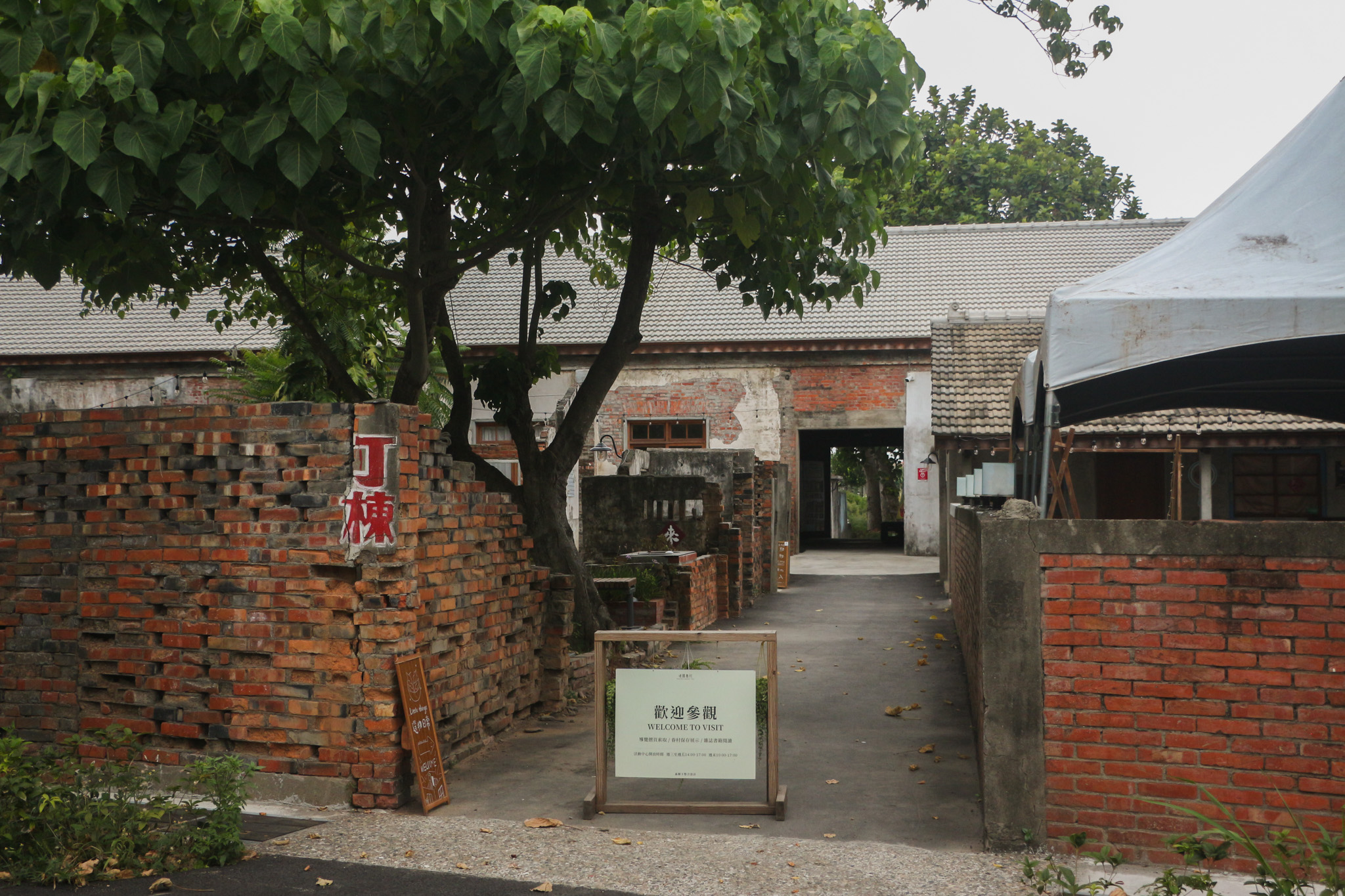
丁棟 Building DING
日治時期為飛行員兵舍,戰後為國軍士官棟,初期內部運用甘蔗板間隔26戶,全盛時期可居住上百人。隨著孩童成長與生活空間需求,眷戶開始於丁棟內部進行增改建,向上加蓋閣樓、向外加蓋廚房、浴室及房間,產生「屋中樓」現象。丁棟為目前虎尾建國眷村保存最完整的兵舍建築,丁棟見證兩個跨時代、跨族群的空間痕跡,極具保存價值。
Formerly the pilots’ barracks during Japanese occupation, this building became the national military petty officers’ dormitory after the War. At the very beginning, the interior was parted into 26 households using sugarcane partitions and accommodated more than 100 people in its prime time. Since children grew up and living space demands were raised, residents started to augment and/or modify its interior by adding attics upwards, expanding kitchens, toilets and bedrooms outwards, resulting in a “houses within a building” phenomenon. Building D is the most fully preserved barrack architecture in Hu-Wei Jian Guo Village today, and it has witnessed two generations. Cross-group spatial imprints are most valuable for being preserved.
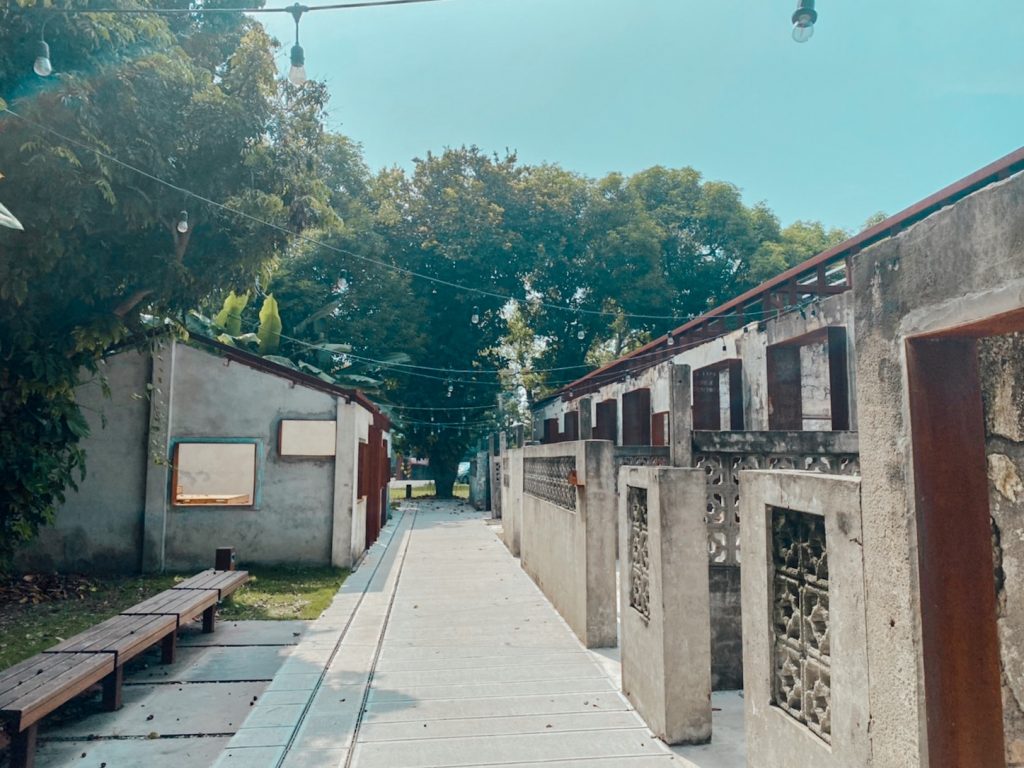
己棟 Building Ji
己棟為戰後所興建的眷舍,建國一村的「己」、「庚」、「辛」棟皆為戰後因居住空間不足而同期興建,據日軍檔案記載可見「己」、「庚」、「辛」棟皆有日軍倉庫,但於二戰末期遭美軍轟炸而損毀。戰後,己棟第一戶為虎尾機場空軍電台台長宅第。
Building Ji was built after the War; Buildings Ji, Geng, and Hsin were constructed in a same period after the War due to insufficient residential spaces. According to
Japanese military documents, all three buildings used to have military
warehouses but they were destroyed by USA bombardments in late WWII. After the
War, the first household of Building Ji was the resident of the master of Hu Wei
Airport Airforce Radio Station.
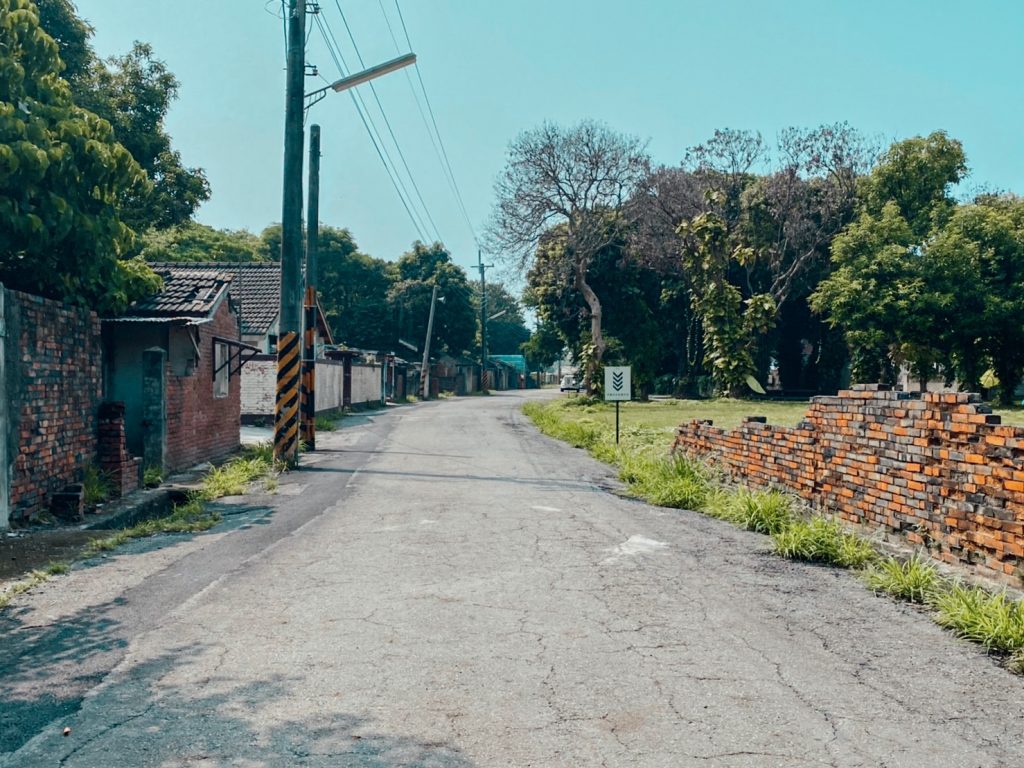
庚、辛棟
己棟、庚棟及辛棟三棟合稱新三棟。為戰後國民政府來台,於1950年新建而成的。主要為提供空軍飛行官之眷舍,高度均為五米半左右,有別於日治時期七米多的庫房建築。住戶稱此種房子為「矮房子」。
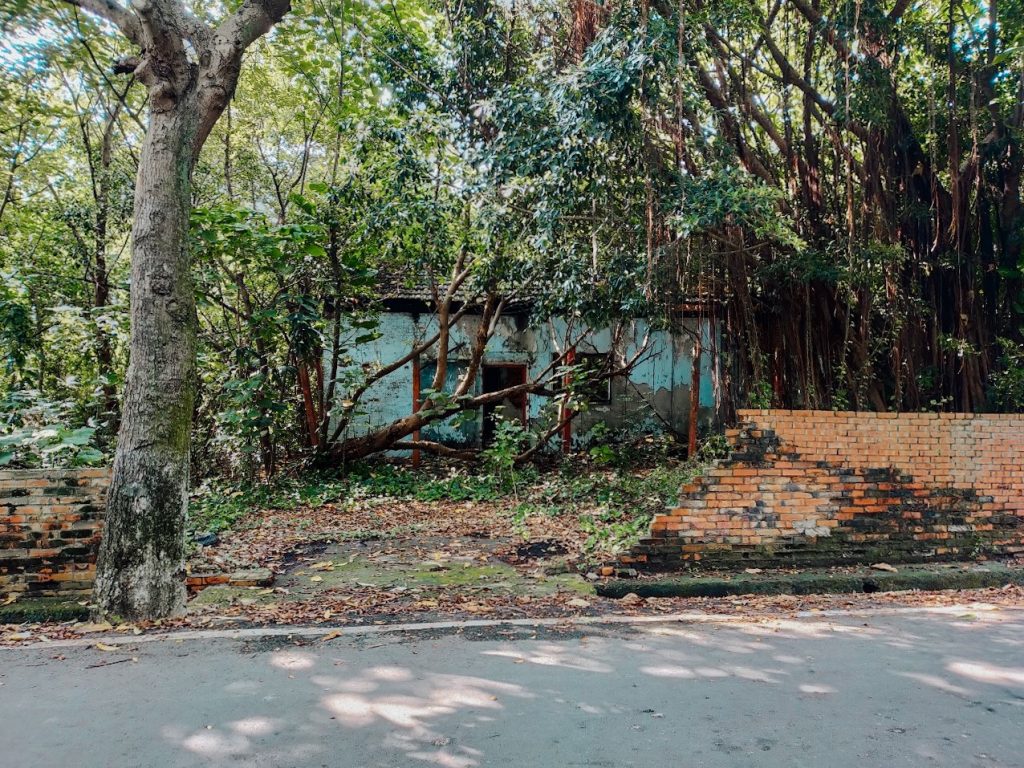
庫房棟
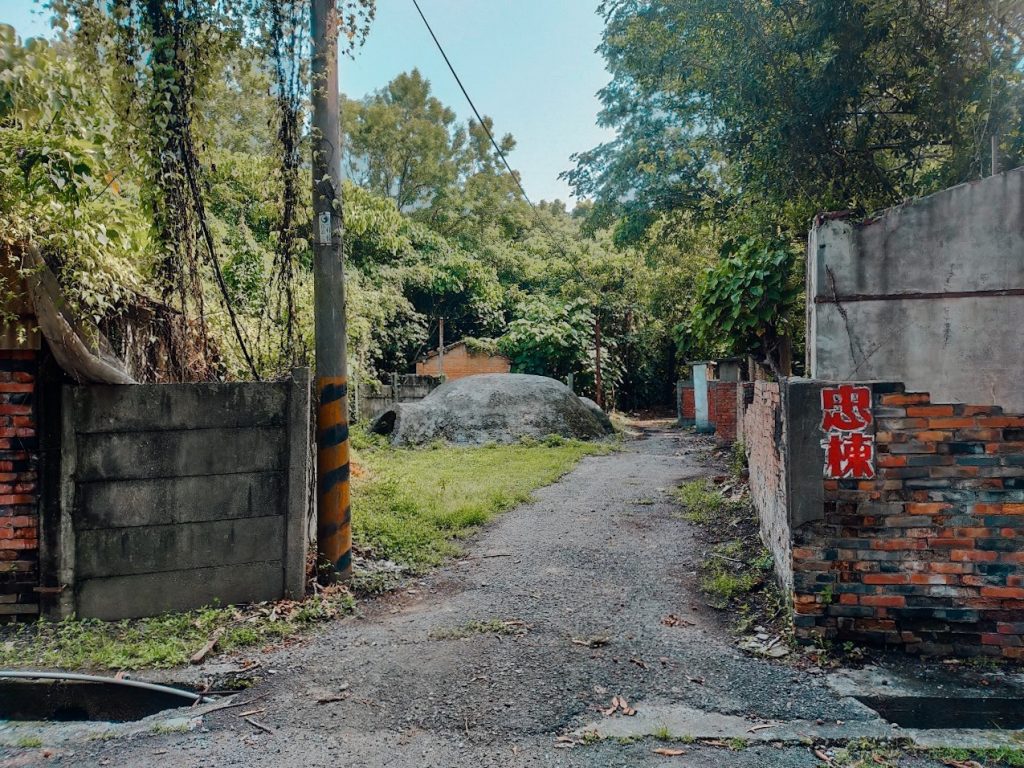
忠棟 Building Zhong
日治時期為飛行員兵舍。戰後名為「戊棟」,曾因機場兵舍不敷使用而改為「忠棟」,作為單身飛行員宿舍,居民又稱之「光桿宿舍」。空軍眷村大多住著有家眷的軍人家庭,然而忠棟因應飛行場需求而作為單身飛行員宿舍,是為相對特殊的居住型態。初級飛行訓練班結束後,「忠棟」回歸一般軍眷居住使用。
This used to be the pilots’ barrack during Japanese occupation. It was named Building E after the War, and was once renamed as Zhong Building due to the lack of airport barracks, and used as a single pilot’s dormitory, known to residents as Bachelor’s Dorm. The Airforce dependents village is mostly used by married soldiers’ dependents, yet Zhong Building was used as a single pilot’s dormitory because of airfield needs, which is relatively a specialized housing pattern. After ending of junior pilot training class, Zhong Building returned to be a residence of ordinary military dependents.
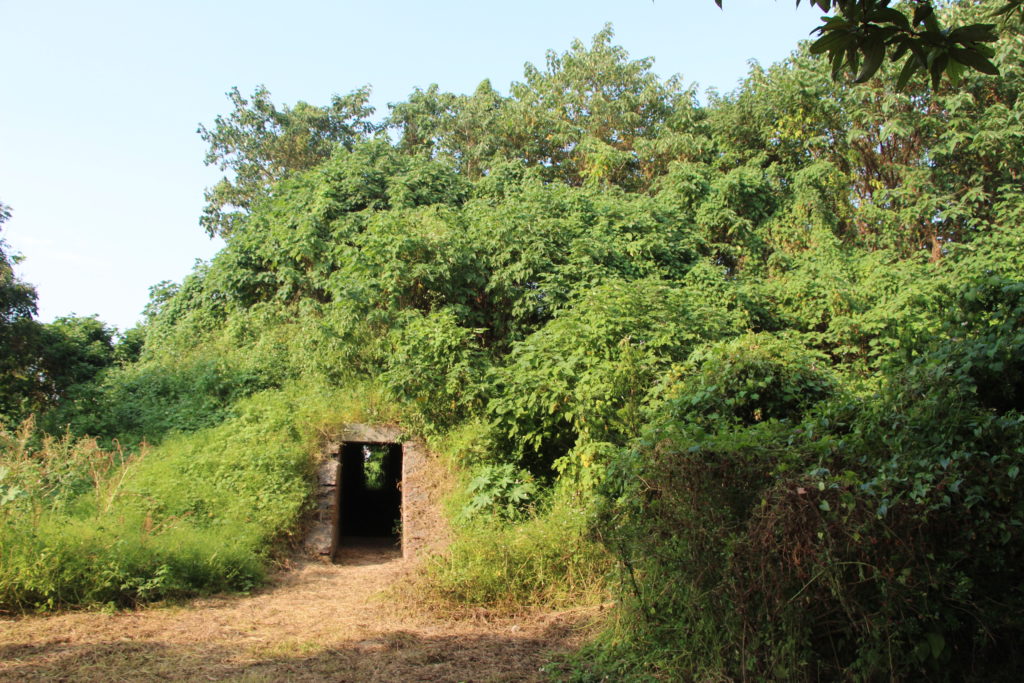
指揮所 Air Defense / Combat Command Post
一村出口旁的兩座大型防空洞,興建年份推估約在1944年,與兵舍同時完成,根據日軍檔案記載,較大的防空洞為「防空兼戰鬥指揮所」,較小的防空洞為「發電所」,外觀皆覆土及植樹林作為掩蔽。
戰後,機場與兵舍成為空軍基地及空軍眷村,防空兼戰鬥指揮所則成為空軍虎尾飛行初級班通訊分隊所使用,後改編為「空軍電台」。今日的活動中心為前空軍電台的辦公室,電台相關通訊設備如有線電話、無線發報機等則裝設於大型防空洞中,約有四至五人在內工作;小型防空洞則放置柴油及發電機。
Two large Bomb Shelters at the entrance of Jian Guo Village-I were estimated to be built in 1944 or so and completed the same time as the barracks. According to Japanese military documents, the bigger shelter was a “Bomb Shelter” as well as the “Combat Command Post,” and the smaller one was a “Power Station”; both were covered by earth and plantation for shielding purposes.
After the War, the airport and barracks became an Airforce base and Airforce dependents village;the Air Defense/Combat Command Post was used by the Communication Squad of Hu Wei Junior Pilot Training Class, which was later re-organized as the “Airforce Radio Station.” The current Activity Center was the office of the former Airforce Radio Station; relevant communication facilities of the radio station, such as wired telephone, radio
transmitter, and so on, were equipped in the large shelter, where 4 or 5 people
worked; the small shelter was used for storing diesel fuel and generators.
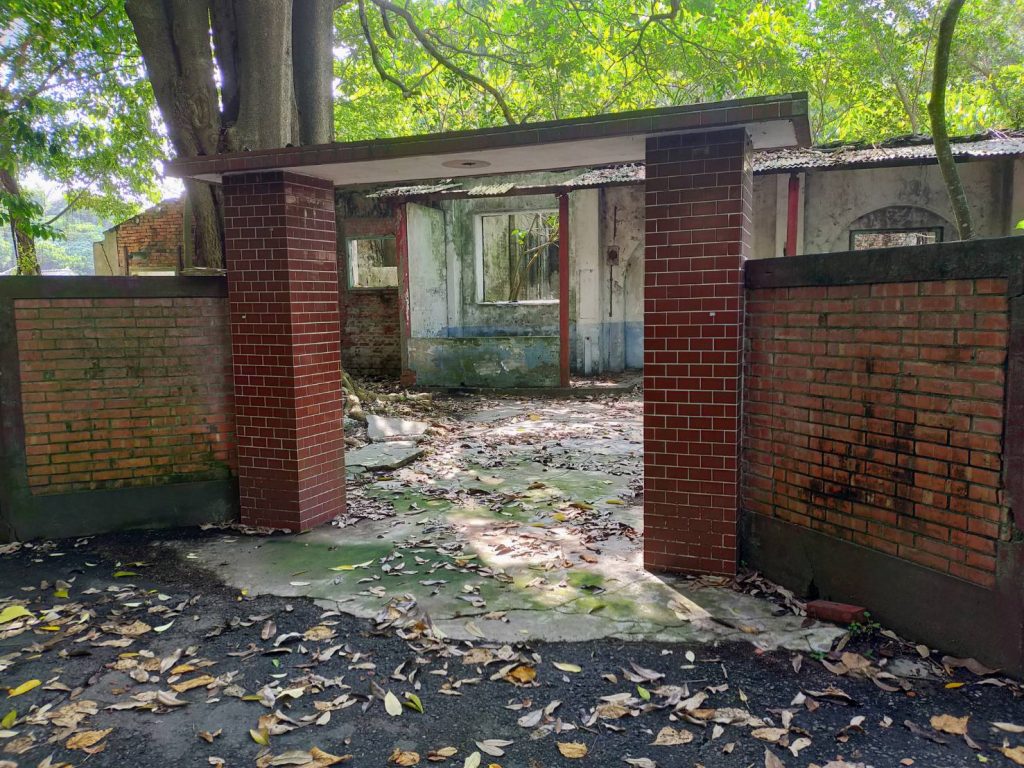
廚房棟
日治時期原為交誼廳,鑄鐵製鍋爐為公共浴室用途,也作為廚房之用,故亦稱廚房棟。戰後,改為空軍眷舍使用,分隔成為四戶,將圓形拱門修改為方形窗戶。
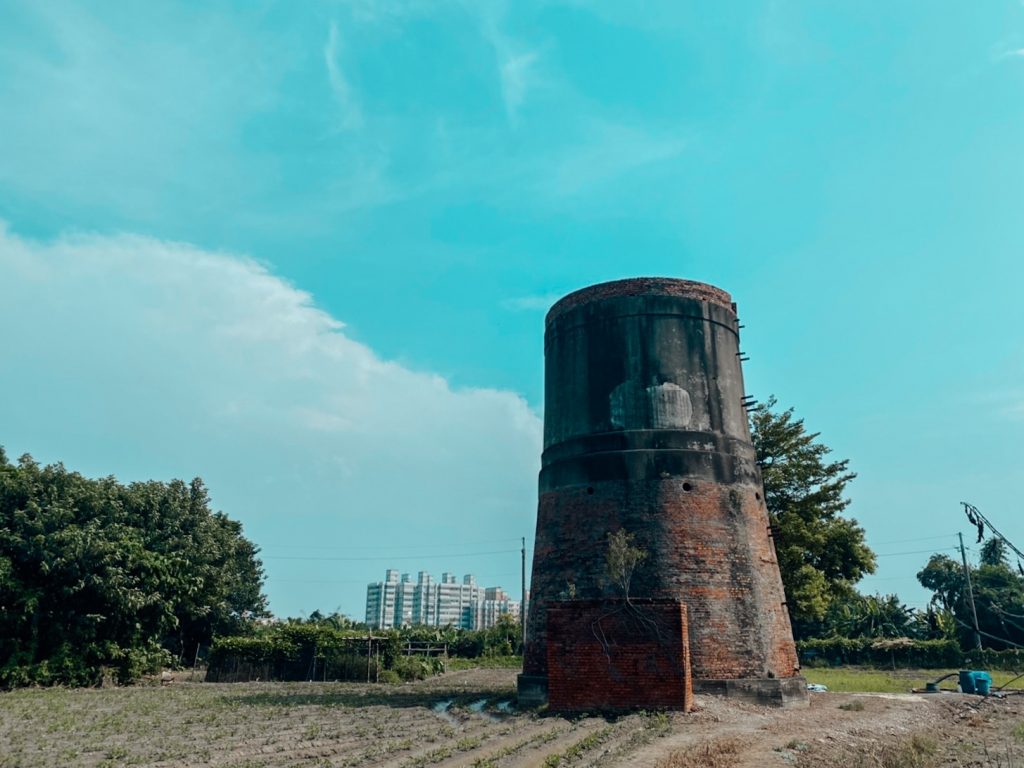
水塔
虎尾建國一村及二村皆各有一座,一村水塔上仍可見二戰期間美軍轟炸所留下的機關槍掃射痕跡。戰後,一村水塔曾因眷舍分配問題短期有軍人居住於內,據信水塔第一層曾放置抽水機與加壓機,水管四散於地面而無從得知如何使用,因此水塔在往後的眷村歲月並無再使用,今日水塔已成為虎尾眷村的壯觀地標。
There is one each in Hu-Wei Jian Guo Village-I and Hu-Wei Jian Guo Village-II; on the one in Village-I, people can still see imprints of machinegun bullets left by USA bombardments during WWII. After the War, the water tower of Village-I was once occupied by soldiers due to housing allocation issues. Allegedly, level-I of the water tower was provided with pump units and pressure boosters; pipelines were scattered all over the place without people knowing how to use them, and therefore the water tower was never used again in the subsequent years as the place became a military dependents’ village. Today, the water tower has become a magnificent landmark of Hu-Wei Jian Guo Village.
